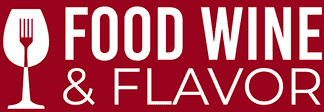French wines are named for the region they come from, rather than their grape varietals. When we talk about Bordeaux wines, that is not a special type of grape, but rather one or more of the grape varietals approved for that area. This is one of several differences between Old World vs New World approaches to wine.

Bordeaux, one of the most iconic wine regions in the world, is located in southwestern France, where two rivers, the Garonne and the Dordogne, meet to form the Gironde estuary. The region is known for producing some of the world’s most highly prized and collectible wines.

The Right Bank of Bordeaux is a wine region located on the eastern side of the Gironde estuary, known for producing full-bodied red wines made primarily from Merlot and Cabernet Franc grape varieties. The region is home to several famous chateaus, many of which were included in the Classification of 1855, which classified the top chateaux of Bordeaux based on their reputation and quality of wine.
Varietals of the Right Bank
Merlot is the most commonly planted grape varietal on the Right Bank of Bordeaux. It is a thin-skinned grape that produces wines that are medium to full-bodied with soft tannins and a plush mouthfeel. Merlot is known for its fruit-forward flavors of cherry, plum, and blackberry, as well as its aromas of chocolate, vanilla, and cedar.
Cabernet Franc is another important grape varietal on the Right Bank of Bordeaux. It is often blended with Merlot to create wines that are full-bodied with medium to high tannins and a spicy, herbal flavor profile. Cabernet Franc adds complexity to the blend with its aromas of violet, graphite, and tobacco.
Cabernet Sauvignon is also grown on the Right Bank of Bordeaux, although it is not as commonly planted as Merlot and Cabernet Franc. It is a thick-skinned grape that produces wines that are full-bodied with high tannins and a complex flavor profile of black currant, cedar, and tobacco.
Saint-Emilion Grand Cru Classe Classification
In our last post, Bordeaux: Left Bank – Native Home to Cabernet Sauvignon, we explained the system which classified the top chateaus (wine producers) of the region into five different tiers, based on their reputation and quality of wine.
Under that system, nearly all of the Right Bank chateaux were excluded. In 1954, a new classification system was created. This system included two categories:
(1) Grand Cru Classe – great classified growths
(2) Premier Grand Cru Classe – a higher designation for first great classified growth
As of 2012, there are 18 producers with premier grand cru classe status. There are four considered to be far superior than the rest, so they are given a category A ranking and all of the others a category B.
Category A Chateaus:
- Chateau Angelus
- Chateau Ausone
- Chateau Cheval Blanc
- Chateau Pavie
Wine Regions
The Right Bank of Bordeaux is home to several important wine regions, each with its own unique terroir and style of wine:

Saint-Émilion (18) is one of the most famous wine regions on the Right Bank of Bordeaux. It is located in the northeast of the region and is known for its rich, full-bodied red wines that are produced primarily from Merlot and Cabernet Franc grapes.
The region is divided into several sub-regions, including Saint-Émilion Grand Cru, Saint-Émilion Grand Cru Classé, and Saint-Émilion Satellites (17).
The wines of Saint-Émilion are known for their complexity and structure, with flavors of black fruit, licorice, and tobacco. The region’s climate is influenced by the Atlantic Ocean and the Dordogne River, which provides a moderate maritime climate with cool nights and warm days, allowing the grapes to ripen slowly and develop complex flavors.
Pomerol (16) is located just north of Saint-Emilion. Pomerol is known for producing some of the most powerful and concentrated wines in Bordeaux, with rich, complex flavors and a velvety texture. Chateau Petrus, one of the most expensive wines in the world, is located in Pomerol and is known for its ability to age for decades.
Fronsac (13), Canon-Fronsac, (13) and Cotes de Castillon (19). These regions are known for producing more affordable wines than those of Saint-Emilion and Pomerol, but are still known for their high quality and unique character.
Pronunciations
* Note: always go soft or trail off on the final vowel sounds
Garonne (pronounced GARE-own) * bonus for rolling the R
Gironde (pronounced jeer-RONE) * bonus for rolling the R
Dordogne (pronounced door-DOHN-ya)
Saint-Émilion (pronounced sant-eh-MEE-lee-OHN)
Pomerol (pronounced pah-MER-rall)
Fronsac (pronounced frawn-ZAC) * bonus for rolling the FR
Canon-Fronsac (pronounced CA-nown frawn-ZAC)
– CA as in “cat”
Cotes de Castillon (pronounced CO-tah CA-stee-YOH)
Chateau Petrus (pronounced SHA-toe peh-troos)







0 Comments